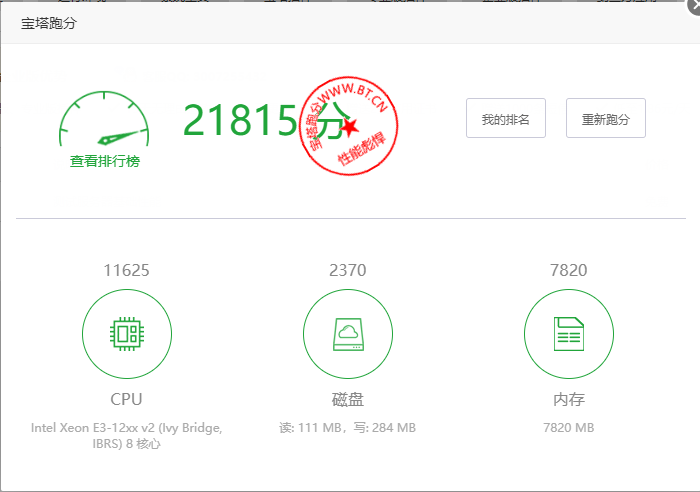病毒远程管理特洛伊木马(RAT)病毒
远程管理特洛伊木马RAT病毒
远程管理特洛伊木马RAT病毒
RATs
The world of malicious software is often divided into two types:viraland nonviral.Viruses are little bits of code that are buried in other codes.When the“host”codes are executed, the viruses replicate themselves andmay attempt to do something destructive. In this, they behave much likebiological viruses.
Worms are a kind of computer parasite considered to be part of theviral camp because they replicate and spread from computer to computer.
As with viruses, a worm’ s malicious act is often the very act ofreplication; they can overwhelm computer infrastructures by generatingmassive numbers of e-mails or requests for connections that servers can’t handle.
Worms differ from viruses, though, in that they aren’ t just bits of code
that exist in other files.They could be whole files——an entire Excelspreadsheet, for example. They replicate without the need for anotherprogram to be run.
Remote administration types are an example of another kind ofnonviral malicious software, the Trojan horse, or more simply Trojan.The purpose of these programs isn’ t replication, but to penetrate andcontrol.That masquerade as one thing when in fact they are somethingelse,usually something destructive.
There are a number of kinds of Trojans, including spybots,whichreport on the Web sites a computer user vis its,and keybots or keyloggers,which record and report the user s keystrokes in order to discoverpasswords and other confidential information.
RATs attempt to give a remote intruder administrative control of aninfected computer.They work as client/server pairs.The server res ides onthe infected machine,while the client resides elsewhere, across thenetwork,where it s availab le to a remote intruder.
Using standard TCP/IP or UDP protocols, the client sends instructionsto the server. The server does what it’ s told to do on the infected
c o mputer.
Trojans, inc luding RATs, are usually downloaded inadvertently byeven the most savvy users.Visiting the wrong Web site or clicking on thewrong hyperlink invites the unwanted Trojan in.RATs install themselvesby exploiting weaknesses in standard programs and browsers.
Once they reside on a computer,RATs are hard to detect and remove.For Windows users, simply pressing Ctrl-Alt-Delete won’ t expose RATs,because they operate in the background and don t appear in the task list.
Some especially nefarious RATs have been designed to installthemselves in such a way that they’ re very difficult to remove even afterthey’ re d is covered.
For example, a variant of the Back Orifice RAT called G_Door installsits server as Kernel32.exe in the Windows system directory,where it’ sactive and locked and controls the registry keys.
The active Kernel32.exe can’ t be removed, and a reboot won t clearthe registry keys.Every time an infected computer starts,Kernel32.exewill be restarted,and the program will be active and locked.
Some RAT servers listen on known or standard ports.Others listen onrandom ports, telling their clients which port and which IP address toconnect to by e-mail.
Even computers that connect to the Internet through Internet serviceproviders,which are often thought to offer better security than staticbroadband connections, can be susceptible to control from such RATs ervers.
The ability of RAT servers to initiate connections can also allow someof them to evade firewalls.An outgoing connection is usually permitted.Once a server contacts a client, the client and server can communicate,and the server begins following the instructions of the client.
Legitimate tools are used by systems administrators to managenetworks for a variety of reasons, such as logging employee usage anddownloading program upgrades——functions that are remarkab ly similarto those of some remote administration Trojans.The distinction betweenthe two can be quite narrow.A remote administration tool used by anintruder becomes a RAT.
In April 2001, an unemp loyed British systems administrator namedGary McKinnon used a legitimate remote administration tool known asRemotelyAnywhere to gain control of computers on a U.S.Navy network.
By hacking a few unguarded passwords on the target computers andusing illegal copies of Remotely Anywhere,McKinnon was able to breakinto the Navy’ s network and use the remote administration tool to stealinformation and delete files and logs.The fact that McKinnon launchedthe attack from his girlfriend’ s e-mail account left him vulnerable tod etec tio n.
Some of the famous RATs are variants of Back Orifice; they includeNetbus, SubSeven, Bionet and Hack a tack. These RATs tend to befamilies more than single programs.They are morphed by hackers into avast array of Trojans with similar capabilities.
远程管理特洛伊木马RAT病毒
恶意软件的世界常常分成两类病毒性和非病毒性。病毒是埋藏在其他程序中的很短的程序代码。当“主”程序执行时病毒就复制自身并企图做些有破坏性的事。在此过程中它们的行为很像生物病毒。
蠕虫是一类计算机寄生虫可以把它们归到病毒阵营 因为它们进行复制从一台计算机散布到另一台计算机。
作为病毒蠕虫的有害行为常常只是复制这个行为。它们通过生成大量的电子邮件或申请连接的请求使服务器没法处理而导致计算机崩溃。
但蠕虫也有别于病毒它们不是存在于其他文件中的代码。它们可以是整个文件如Exc el数据表格。它们不需要运行另一个程序就进行复制。
远程管理病毒是另一类非病毒性恶意软件——特洛伊木马或更简单地称作木马的例子。这些程序的目的不是复制而是渗透进去加以控制。它们伪装成某种东西但实际上是另一件东西通常具有破坏性。
有多种类型的木马病毒其中包括间谍机器人它在网站上报告计算机用户来访和击键机器人它记录和报告用户的击键 目的是为了发现口令和其他的保密信息。
RAT病毒企图让远程入侵者对受感染的计算机进行管理控制。它
们以客户机/服务器那样的方式进行工作。服务器驻留在受感染的机器中而客户机位于网络上能实施远程入侵的其他地方。
利用标准的T CP/IP或UDP协议该客户机给服务器发送指令。服务器在受感染的计算机上做被告知的事情。
木马病毒含RAT病毒通常由用户、甚至最聪明的用户不经意地下载下来。访问恶意的网站或者点击恶意的链接都可能招致不想要的特洛伊病毒进入计算机。 RAT病毒利用普通程序和浏览器中的弱点自行安装。
一旦它们驻留在计算机中 RAT病毒是很难发现和去除的。对于Wind o ws用户简单地击打C trlAltD e lete键并不能暴露RAT病毒 因为它们在后台工作不会出现在任务列表中。
有些非常穷凶极恶的RAT病毒设计成以一种即使在被发现后也非常难去除的方式安装。
例如 Back Orifice RAT病毒的一个变种 叫G_Door安装其服务器作为Windows系统目录中的Kernel32.ex e存活并锁定在那里并控制注册键。
活动的Kernel32.exe是不能去除的重新启动也不能清除注册键。每次受感染的计算机开机 Kerne l32.exe被再次启动并被激活和锁定。
有些RAT病毒对已知的或标准的端口进行侦听。其他的则对随机的端口进行侦听通告它的客户机电子邮件连接到了哪些端口和哪些IP地址。
通过IS P 因特网服务提供商连接到因特网上的计算机虽然常常被认为比静态的宽带连接更安全也可能被这样的RAT病毒所控制。
RAT病毒服务器这种激活连接的能力也能让它们中的一些可以入侵防火墙。通常向外的连接是允许的一旦服务器与客户机建立联系客户机和服务器就能进行通信服务器就开始遵循客户机的指令工作。
出于各种原因系统管理员使用合法工具管理网络如记录雇员的使用和下载程序更新与某些远程管理木马病毒的功能非常相像。这两者间的差别可能是非常小的远程管理工具被入侵者使用就成了RAT病毒。
2001年4月一名叫Gary McKin-non的失业的英国系统管理员利用合法的远程管理工具——Remotely Anywhere成功地控制了美国海军网络上的多台计算机。
Mc Kinno n通过黑客手段获得目标计算机上未防护的口令和使用非法拷贝的Remotely Anywhere软件突破了美国海军的网络利用该远程管理工具偷窃信息、删除文件和记录。Mc Kinno n从他女朋友的电子邮件账号发起攻击这个账号给侦查留下了线索。
一些有名的RAT病毒是Bac k Orific e的变种如Netbus、S ub S even、Bionet和Hack a tack。这些RAT病毒大多是一组程序而不是单独的一个程序。黑客把它们变成一个庞大的、具有类似功能的木马病毒阵列。
上一篇英语 目录允许网络一下一篇英语 电脑BIOS里名词中英文对照表查看更多关于电脑电信的文章网友同时还浏览了
电脑英语--常见硬件篇
网络广告术语翻译
机新词汇
数据通信系统
电脑显示器词汇大全
常见的重要电脑英语及其缩写
- 病毒远程管理特洛伊木马(RAT)病毒相关文档
- 人工智能远程木马
- 2015年全国职业院校信息化教学大赛获奖名单
- 汽车远程木马
- 木马基于木马植入的网络远程探测新方案
- 电脑网络人:不是木马的远程控制软件
- 服务端远程控制与木马程序设计
搬瓦工VPS:高端线路,助力企业运营,10Gbps美国 cn2 gia,1Gbps香港cn2 gia,10Gbps日本软银
搬瓦工vps(bandwagonhost)现在面向中国大陆有3条顶级线路:美国 cn2 gia,香港 cn2 gia,日本软银(softbank)。详细带宽是:美国cn2 gia、日本软银,都是2.5Gbps~10Gbps带宽,香港 cn2 gia为1Gbps带宽,搬瓦工是目前为止,全球所有提供这三种带宽的VPS(云服务器)商家里面带宽最大的,成本最高的,没有第二家了! 官方网站:https...

小渣云(36元/月)美国VPS洛杉矶 8核 8G
小渣云 做那个你想都不敢想的套餐 你现在也许不知道小渣云 不过未来你将被小渣云的产品所吸引小渣云 专注于一个套餐的商家 把性价比 稳定性 以及价格做到极致的商家,也许你不相信36元在别人家1核1G都买不到的价格在小渣云却可以买到 8核8G 高配云服务器,并且在安全性 稳定性 都是极高的标准。小渣云 目前使用的是美国超级稳定的ceranetworks机房 数据安全上 每5天备份一次数据倒异地 支持一...

ShockHosting日本机房VPS测试点评
这个月11号ShockHosting发了个新上日本东京机房的邮件,并且表示其他机房可以申请转移到日本,刚好赵容手里有个美国的也没数据就发工单申请新开了一个,这里做个简单的测试,方便大家参考。ShockHosting成立于2013年,目前提供的VPS主机可以选择11个数据中心,包括美国洛杉矶、芝加哥、达拉斯、杰克逊维尔、新泽西、澳大利亚、新加坡、日本、荷兰和英国等。官方网站:https://shoc...

-
internalservererrorinternal server errorphpmyadmin下载phpmyadmin怎么安装,求网站空间商帮助。在线代理QQ代理服务器怎么弄啊?地址是指IP,端口是什么?有必要该吗?还有用户,密码,都代表什么啊?360退出北京时间电脑桌面右下放了时间不对了怎么可以准确调回北京时间googlepr值seo谷歌pr值和什么有关系抢米网什么意思抢小米手机泉州商标注册泉州本地商标注册要怎么注册?具体流程是什么?即时通平台寻找娱乐高科技产品温州都市报招聘劳务市场找工作可靠吗400电话查询如何辨别400电话的真伪?